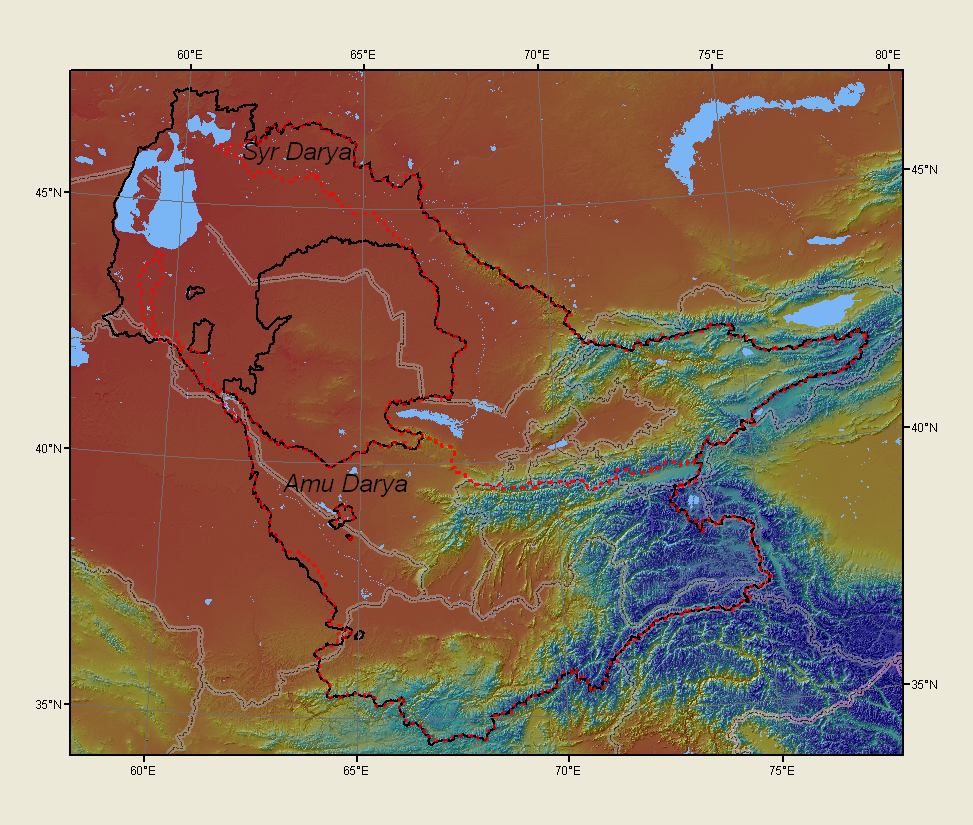

|
| This is a chunk of the Hydrosheds conditioned 3" DEM which we built on y:\topog\world\hydrosheds\hydrosheds.gdb. The black basin boundary comprises two basins in the beta 15-second HydroSHEDS database. Blue water polygons are from the SWBD. The red dashed lines show the two major basins as defined for our initial VIC modeling. Note one large undrained basin and four smaller ones. |
| Nation | Area (square km, using the HydroSHEDS basin polygons) |
| Kazakhstan | 221163 |
| Uzbekistan | 249748 |
| Turkmenistan | 57262 |
| Kyrgyzstan | 118403 |
| Tajikistan | 136862 |
| Afghanistan | 167031 |
The "watershed" command generates two modeled basins at 3-second resolution. The flowdirection raster was masked to those basins. Then a custom python script ( flowscale.py on http://gis.ess.washington.edu/projects/scaling ) was used to generalize this to a raster of .125 degree (450 second) cellsize. The web page shows how the resulting flowdirection raster can be examined and hand-edited if desired.
The aggregate command counts the number of 3-second cells per .125-degree cell. Dividing by 22500, we get the "fraction file", indicating the portion of each VIC cell occupied by the watershed. Most values are 1.0 or 0.0. The fraction file can be used as a weight in calculating the cumulative upstream area in cells.
MCD12Q1.A2013001.h21v04.051.2014308191630.hdf MCD12Q1.A2013001.h22v04.051.2014308191823.hdf MCD12Q1.A2013001.h22v05.051.2014308191831.hdf MCD12Q1.A2013001.h23v04.051.2014308192016.hdf MCD12Q1.A2013001.h23v05.051.2014308192023.hdf MCD12Q1.A2013001.h24v05.051.2014308192152.hdfcovering the year 2012. It was in a sinusoidal projection on a spherical ellipsoid. Data was first projected onto cells on a WGS84 spheroid at an oversampled .00416667-degree cell size. A majority filter was used to derive values of landcover classes for .125-degree cells. Overlapping areas were compared, and a mapping of MODIS categories to Klein categories was devised. MODIS data was used for Afghanistan and a few stray edge cells where there was no data in the Klein, etal map. Landcover parameters were obtained from a combination of previously calibrated VIC parameters and University of Maryland vegetation parameters.